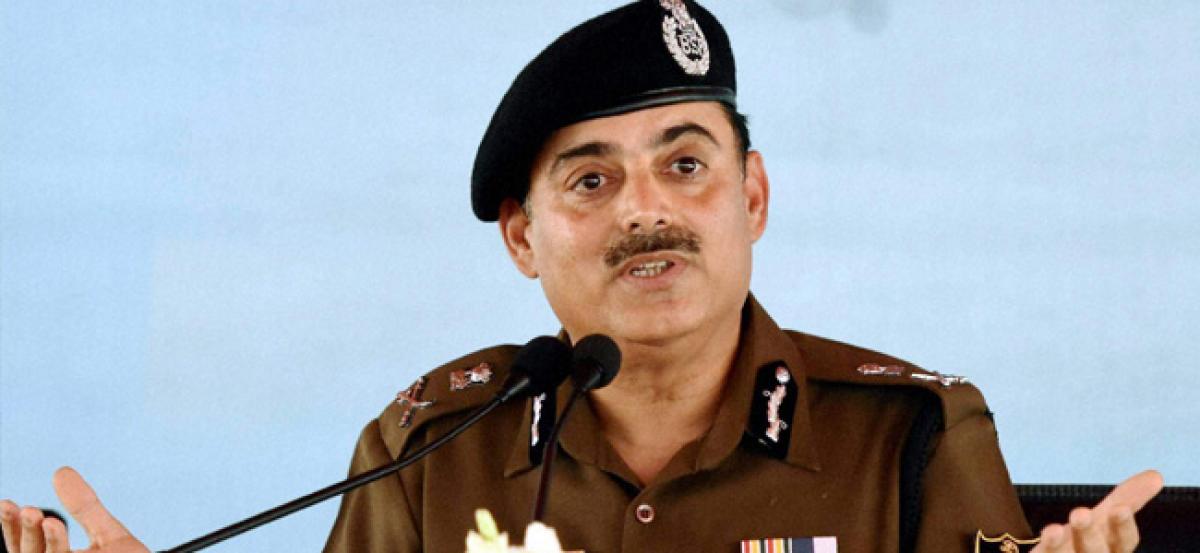Live
- Trailblazing Yakshagana Artiste Leelavathi Baipaditthaya No More
- Cong in direct fight with BJP on 45-50 seats in Delhi Assembly election: Sandeep Dikshit
- Vijay Diwas: Assam Rifles organises Half Marathon in Tripura
- Delhi HC to hear on Monday plea against suppression of CAG reports by CM Atishi
- Collaboration, innovation, PPP key to achieve 2047 goals: Jitendra Singh
- Portraits of National Leaders to be Unveiled in Karnataka Assembly Hall
- Kejriwal's claims on vision for development ridiculous: Delhi BJP
- One nation, one election need of the hour: Mukhtar Abbas Naqvi
- Educational Trips in South Kanara Put on Hold Following Murudeshwar Drowning Incident
- Karnataka Temple Embraces Mechanical Elephant for Cruelty-Free Ceremonies
Just In

The BSF has embarked on the path of modernisation and is depending more on technology to guard the international border with Pakistan, its Director General K.K. Sharma said on Wednesday.
New Delhi: The BSF has embarked on the path of modernisation and is depending more on technology to guard the international border with Pakistan, its Director General K.K. Sharma said on Wednesday.
"Seeing the difficulty of the western border, I personally feel that the future of border guarding lies in the use of technology more and more than increasing manpower," Sharma said during a media interaction organised by the Indian Association of Foreign Affairs Correspondents (IAFAC) here.
"I said this to one of the parliamentary committees when they asked me how many more men you would like to have to make the border absolutely secure," he said.
Starting with 25 battalions in 1965 to check intrusions from Pakistan, the Border Security Force (BSF) today has 186 battalions.
It is the premier agency for guarding the international border with Pakistan south of the Chenab river - on the north it works under the operational control of the Indian Army - and in the east it is the first line of defence along the border with Bangladesh.
While the Assam Rifles looks after the border with Myanmar, the Sashastra Seema Bal (SSB) is in charge of the borders with Bhutan and Nepal.
Sharma said that he told the parliamentary committee to give more money to buy technology as the future of border guarding lies in the use of technology and not in increasing manpower.
"So, as a result, we are in the process of modernising our border guarding and we have launched a pilot project," he said. "Its name is Comprehensive Integrated Border Management System (CIBMS)."
Sharma said that the CIBMS was conceptualised around a year-and-a-half back and it was put in place around March-April this year.
He said that the work for this has been awarded to two companies and is being implemented along two five-km patches in Jammu.
"We are already using a number of gadgets and technologies," the BSF Director General said.
"For example, we are using hand-held thermal imagers (HHTIs). Thermal imagers are single most important gadget which are used by the Border Security Force."
Sharma said that HHTIs help in seeing the heat signature of any living being, human or animal, that comes towards India.
"So, we are in a position to see any attempt at infiltration," he said. "We are using night vision devices, we are using cameras, we are using radars."
He said that all these gadgets and technologies are being integrated as also some new technologies that have not been used by anyone in India so far. This smart fence would give advanced warning of any attempted intrusion or infiltration.
"The second component is to take this feed - this alert which is created by this smart fence - to the decision-making level," Sharma said.
"This communication they make to border outposts (BOPs) or even higher. There we will have a command and control system. There will be a few people monitoring it round the clock and the system will create an alarm whenever there is any attempt to breach it (border)."
According to the BSF Director General, the thermal imagers are very sophisticated and can look 20-25 km inside the enemy territory.
"However, I don't need such long-distance HHTIs. I need to look up to two km on the other side," he said.
Sharma said that apart from making the border more secure, the CIBMS would also give respite to the BSF personnel.
"We may shift from the present patrolling system to the QRT or quick response team system where they are ready and waiting at the border outposts for something to happen so that they can go and respond," he said, adding that an infra-red intruder detection system was also being used in the process.
"So, with the induction of technology, we want to modernise the process of border guarding."

© 2024 Hyderabad Media House Limited/The Hans India. All rights reserved. Powered by hocalwire.com







